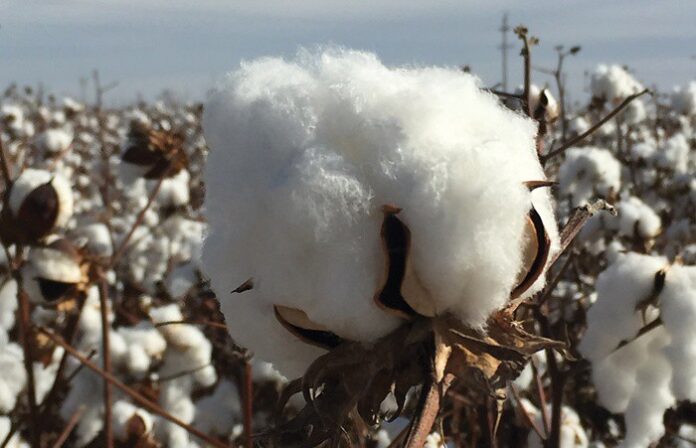ISLAMABAD: An Inter-Ministerial Meeting (IMM) on cotton was held in the Commerce Division on Monday to deliberate upon the issues pertaining to demand and supply of cotton in the market so that a viable policy could be devised to ensure the availability of cotton to the textile sector on competitive rates.
The meeting was co-chaired by Adviser to Prime Minister on Commerce Razak Dawood and National Food Securities & Research Minister Sahibzada Muhammad Mehboob Sultan. Senior representatives from both ministries were also present on the occasion.
The meeting stressed to ensure a reasonable profit on the production of cotton by announcing a minimum indicative price of cotton to farmers/producers.
A representative of the Textile Division informed that Pakistan cotton consumption was 16.31 million bales in 2007-08, which decreased to its lowest level at 12.08 million bales and in 2015-16.
“This year, during July-April 2018-19, only 2.1 million bales were imported, as compared to 2.9 million bales in the corresponding period of last year,” he added.
The meeting was further apprised that in the year 2018-19, the production target was set at 14.37 million bales, which was revised to 10.78 million bales first and then to 9.98 million bales. This was due to low yield on back of chronic issues of poor and outdated seed technology, pesticides etc.
The PM’s adviser stressed the need to undertake robust research to improve the quality and productivity of cotton so that profits of farmers/producers could be maximized and imports of cotton could be minimized.
“This goal can only be achieved by introducing new varieties of seeds and other inputs, including pesticides,” the adviser added.
The National Food Security and Reseach minister on the occasion informed the participants that Pakistan Agriculture Institute (PSI), an attached department of the ministry, is working to enhance the productivity and quality of cotton by developing new verities of cotton seed for the next sewing season.
“In return cost of production will be decreased significantly, which will increase the profitability of farmers of cotton,” he added.
























